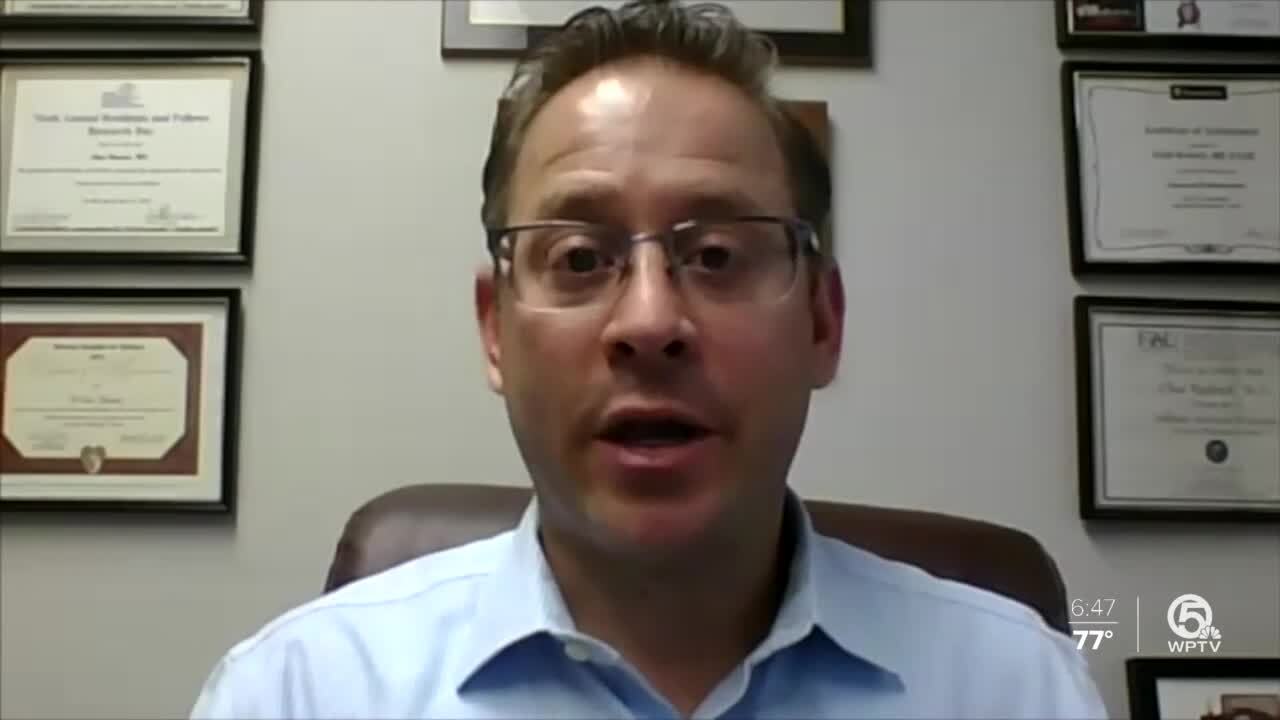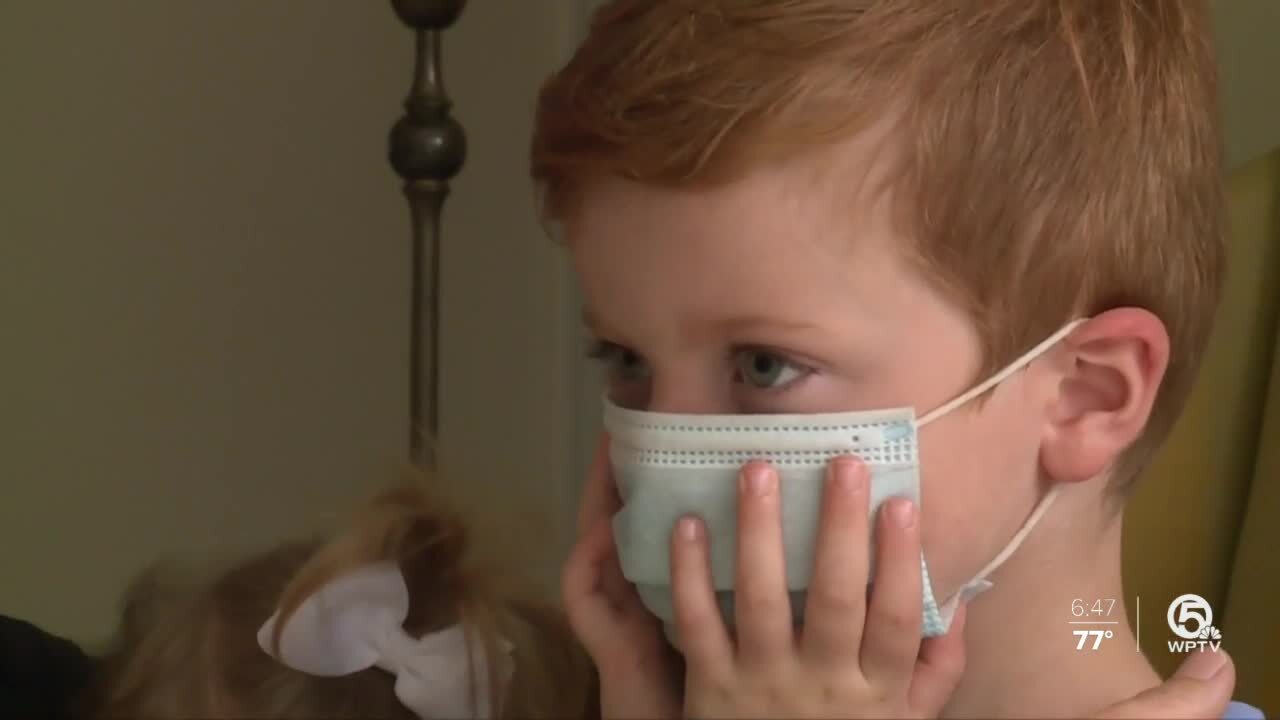TEQUESTA, Fla. — Ariel Bachman has her hands full. Now, Bachman, a mother of three children, needs to tackle mask-wearing ahead of the school year, as her older two kids are headed back to private schools in August.
"If I have a good mask, then I don't really mind it," Bachman's daughter said. "But if I have to wear a really itchy one, it annoys me a lot."
Bachman said practice makes as perfect as can be when it comes to children wearing masks.
"We would practice kind of wearing it around the house and just kind of doing it little by little," she said.

Her approach is also positive, but honest. She said she tries to have a clear message: to protect others and yourself.
"I really just approach it as it's part of her uniform for going back to school," Bachman said.
Dr. Chad Rudnick, a pediatrician with Boca VIPediatrics, stressed the need for children ages 2 and above to wear a mask at day care or school when social distancing is not possible.
"Mask-wearing is going to be extremely important to prevent the spread," he said.

Rudnick suggested packing extra masks in your child's bag, just like you would with socks, underwear and clothes. He said to make sure to send it in a Ziplock, so day care or school employees can send the dirty mask home to be washed.
"There should be extra masks also in case one gets dirty," Rudnick said. "Listen, they are kids. They're gonna be playing. They're gonna get their masks dirty. They might get food on it or dirt on it. Or, for whatever reason, it gets wet."
Rudnick believes successful mask wearing, when it comes to children, starts at home. First, he said, find the right fit for your child's face. Bachman agreed that finding the right mask is key.

"She liked it because it showed her school logo on it," Bachman said, referring to the mask her daughter liked most.
Also, make sure to practice mask-wearing.
"We don't want the first time for a child to have to wear a mask for any extended period of time to be that first day back in school," Rudnick said. "Make sure they've practiced with it, so they are not touching it and pulling it down."
Rudnick suggested getting creative. Practice wearing a mask while watching a TV show together or when playing a family board game. Parents should also set the example.
"Instead of saying, my child can't do it or won't do it, let's practice with it," Rudnick said. "Because in all likelihood, your child can do it, and it starts by them seeing their parent do so, by hearing their parent not complain about wearing a mask."
Jennifer Tomko, a licensed psychotherapist at Clarity Health Solutions, said how a parent reacts is incredibly important.
"We're going to get a different take than if the parents are walking into it, kind of rolling their eyes and saying like, 'Ugh, this is such a pain' and those kinds of presentations, because the kids are going to be less inclined to follow it," she said.
Tomko said finding a designated time to talk about masks with your children can also be helpful in getting the message across. She said it's important to get the message across and address any feedback and concerns they may have.
"Empathizing with them, but also saying, 'But this is what we need to do for right now,'" she said.
Tomko said different ages will need different approaches. For little kids, she suggested teaching them about germs through various arts and crafts. One example, she suggested, is having your child dip his or her hand in flour, then letting them go about their routine in a controlled environment. Then, show them the flour on their face, door knobs, etc. The flour would signify germs.
"There is a very delicate balance we have to create," Tomko said, meaning teach health and safety, but don't scare children too much.
Rudnick and Tomko said kids are adaptable, so try not to stress too much about masks.
"This is going to be different and it's new for them," Rudnick said. "But kids do very well with new things. It just takes practice and getting used to something new."





